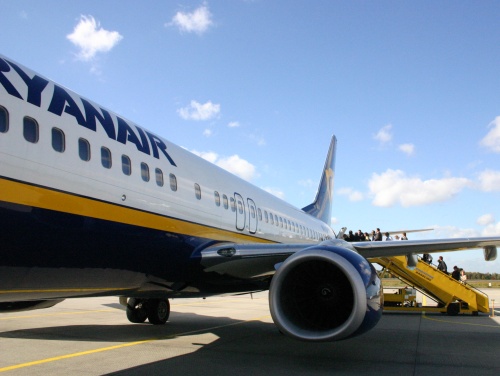Commercial airline company Ryanair has released figures showing an all time record profit for the company in the last financial year.

However, critics are claiming this is not a sign of the company’s popularity, but due to the fact they are squeezing customers with additional fees and charges.
Ryanair, which operates from many UK commercial property airports, is infamous for posting “additional charges” for aspects such as baggage, leg room and fuel duty over and above the price of their budget airline tickets, which are generally much cheaper than their competitors such as British Airways and Flybe. However, with many commercial airlines forced to close due to the recession affecting all areas of the country, the question of how Ryanair managed to record such staggering profits must be asked.
Firstly, passengers were forced to pay up to 16 per cent extra for their flights than in previous years, partly due to the raising of fuel costs as oil prices rocketed. However, the increase in price for people flying out of UK commercial property airports was also a method of damage control, as the company were forced to ground 80 aircraft over the winter months for repairs and problems related to the weather.
This did not seem to put people off choosing Ryanair as their flight providers, though, as passenger numbers climbed 5 per cent from the previous year. The higher costs and additional custom meant that the commercial property airline made almost half a billion pounds in profit in the last financial year alone, up a staggering 25 per cent from 2010-2011.
2011 was said to be a tough year for commercial airlines, and airports, as the British public felt the pinch of the recession and chose to save their money rather than splurge on expensive getaways. This led to two UK airlines, Air Southwest and Astraeus Airlines, being forced to cease operations due to financial difficulties. Yet this is no isolated incident in the UK in recent years – popular airlines such as First Choice Airways and Thomsonfly have been forced to merge with competitors to stay afloat, with others, such as Flyglobespan, succumbing to bankruptcy.
And these closures are not limited to the UK, with countries all over Europe witnessing the demise of previously successful flight companies. Spanair is probably the best known, although Malev in Hungary and Cimber Sterling in Denmark were also great losses to European commercial property airports.
Of course, declining numbers of airliners means less passengers passing through commercial property airports in locations such as Manchester, London and Glasgow – all of which support retail commercial properties within their buildings. With the high street struggling, retail commercial chains could also suffer at the hands of the declining air trade.
Ryanair boss Michael O’leary expressed his delight at the record profits, but also highlighted his concerns for the future of his commercial airline. He said; “We expect more European failures in 2012, as higher oil process and recession continues to expose failed airline models as well as subscale or peripheral carriers.
“UK air passenger duty has caused traffic to decline by 6 per cent since 2007, while the UK Government’s ‘do nothing’ policy about runway capacity in the South East is encouraging traffic and tourism to bypass high-cost London airports in favour of expanding airports in Spain, France and Holland.”
Are you planning a summer getaway this year and thinking about flying on Ryanair? Or, alternatively, are you saving money and opting to visit a UK commercial property as “staycations” rise in popularity?
Previous Post
30 Per Cent Rise in York’s Vacant Commercial Properties